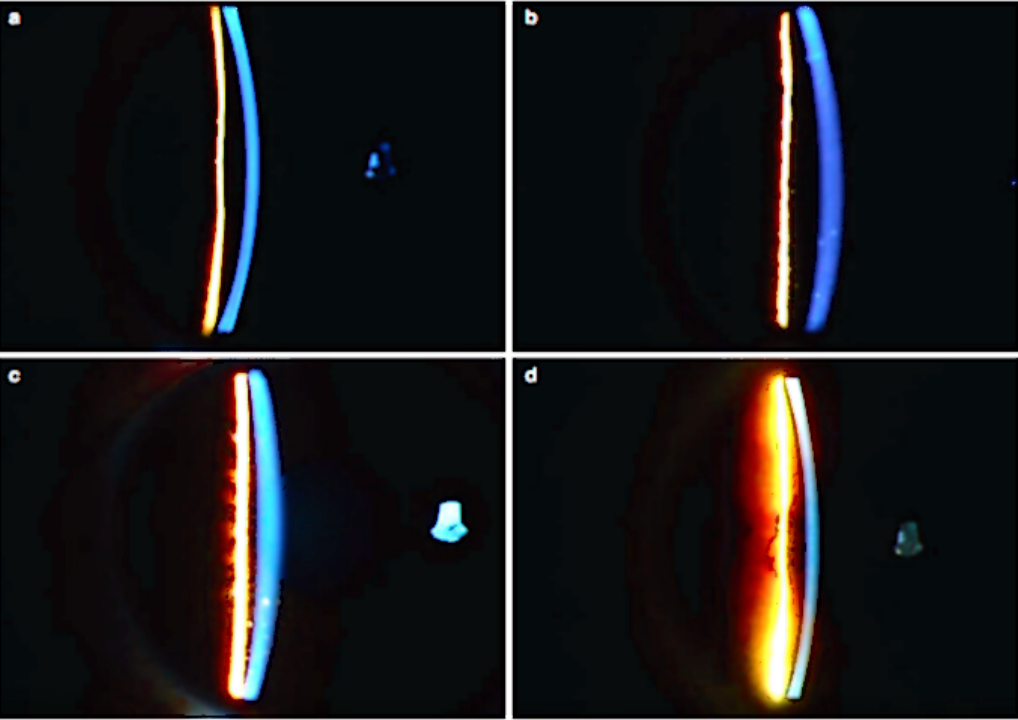1、中华医学会眼科学分会眼免疫学组, 中国医师协会眼科医师分会葡萄膜炎与免疫学组,. 中国Fuchs葡萄膜炎综合征临床诊疗专家共识(2022年)[J]. 中华眼科杂志, 2022, 58(7): 500-505. DOI:10.3760/cma.j.cn112142-20220124-00030.Expert consensus on clinical diagnosis and treatment of Fuchs uveitis syndrome in China (2022)[J]. Chin J Ophthalmol, 2022, 58(7): 500-505. DOI:10.3760/cma.j.cn112142-20220124-00030.
2、Kreps%20EO%2C%20Derveaux%20T%2C%20De%20Keyser%20F%2C%20et%20al.%20Fuchs'%20uveitis%20syndrome%3A%20No%20longer%20a%20syndrome%3F%5BJ%5D.%20Ocul%20Immunol%20Inflamm%2C%202016%2C%2024(3)%3A%20348-357.%20DOI%3A10.3109%2F09273948.2015.1005239.%20Kreps%20EO%2C%20Derveaux%20T%2C%20De%20Keyser%20F%2C%20et%20al.%20Fuchs'%20uveitis%20syndrome%3A%20No%20longer%20a%20syndrome%3F%5BJ%5D.%20Ocul%20Immunol%20Inflamm%2C%202016%2C%2024(3)%3A%20348-357.%20DOI%3A10.3109%2F09273948.2015.1005239.%20
3、Sun Y, Ji Y. A literature review on Fuchs uveitis syndrome: an update[J]. Surv Ophthalmol, 2020, 65(2): 133-143. DOI:10.1016/j.survophthal.2019.10.003. Sun Y, Ji Y. A literature review on Fuchs uveitis syndrome: an update[J]. Surv Ophthalmol, 2020, 65(2): 133-143. DOI:10.1016/j.survophthal.2019.10.003.
4、Yang P, Zhang W, Chen Z, et al. Development of revised diagnostic criteria for Fuchs’ uveitis syndrome in a Chinese population[J]. Br J Ophthalmol, 2022, 106(12): 1678-1683. DOI:10.1136/bjophthalmol-2021-319343. Yang P, Zhang W, Chen Z, et al. Development of revised diagnostic criteria for Fuchs’ uveitis syndrome in a Chinese population[J]. Br J Ophthalmol, 2022, 106(12): 1678-1683. DOI:10.1136/bjophthalmol-2021-319343.
5、Jabs DA, Acharya NR, Chee SP, et al. Classification criteria for fuchs uveitis syndrome[J]. Am J Ophthalmol, 2021, 228: 262-267. DOI:10.1016/j.ajo.2021.03.052.Jabs DA, Acharya NR, Chee SP, et al. Classification criteria for fuchs uveitis syndrome[J]. Am J Ophthalmol, 2021, 228: 262-267. DOI:10.1016/j.ajo.2021.03.052.
6、Hashida N, Asao K, Maruyama K, et al. Cornea findings of spectral domain anterior segment optical coherence tomography in uveitic eyes of various etiologies[J]. Cornea, 2019, 38(10): 1299-1304. DOI:10.1097/ICO.0000000000002065. Hashida N, Asao K, Maruyama K, et al. Cornea findings of spectral domain anterior segment optical coherence tomography in uveitic eyes of various etiologies[J]. Cornea, 2019, 38(10): 1299-1304. DOI:10.1097/ICO.0000000000002065.
7、Mocan%20MC%2C%20Kadayifcilar%20S%2C%20%C4%B0rke%C3%A7%20M.%20In%20vivo%20confocal%20microscopic%20evaluation%20of%20keratic%20precipitates%20and%20endothelial%20morphology%20in%20Fuchs%E2%80%99%20uveitis%20syndrome%5BJ%5D.%20Eye%2C%202012%2C%2026(1)%3A%20119-125.%20DOI%3A10.1038%2Feye.2011.268.%20Mocan%20MC%2C%20Kadayifcilar%20S%2C%20%C4%B0rke%C3%A7%20M.%20In%20vivo%20confocal%20microscopic%20evaluation%20of%20keratic%20precipitates%20and%20endothelial%20morphology%20in%20Fuchs%E2%80%99%20uveitis%20syndrome%5BJ%5D.%20Eye%2C%202012%2C%2026(1)%3A%20119-125.%20DOI%3A10.1038%2Feye.2011.268.%20
8、Kang H, Bao H, Shi Y, et al. Clinical characteristics and aqueous humor laboratory analysis of Chinese patients with rubella virus-associated and cytomegalovirus-associated fuchs uveitis syndrome[J]. Front Med, 2020, 7: 610341. DOI:10.3389/fmed.2020.610341.Kang H, Bao H, Shi Y, et al. Clinical characteristics and aqueous humor laboratory analysis of Chinese patients with rubella virus-associated and cytomegalovirus-associated fuchs uveitis syndrome[J]. Front Med, 2020, 7: 610341. DOI:10.3389/fmed.2020.610341.
9、Sravani NG, Mohamed A, Chaurasia S, et al. Corneal endothelium in unilateral Fuchs heterochromic iridocyclitis[J]. Indian J Ophthalmol, 2020, 68(3): 447-449. DOI:10.4103/ijo.IJO_869_19.Sravani NG, Mohamed A, Chaurasia S, et al. Corneal endothelium in unilateral Fuchs heterochromic iridocyclitis[J]. Indian J Ophthalmol, 2020, 68(3): 447-449. DOI:10.4103/ijo.IJO_869_19.
10、Simsek M, Cakar Ozdal P, Cankurtaran M, et al. Analysis of corneal densitometry and endothelial cell function in fuchs uveitis syndrome[J]. Eye Contact Lens, 2021, 47(4): 196-202. DOI:10.1097/ICL.0000000000000717.Simsek M, Cakar Ozdal P, Cankurtaran M, et al. Analysis of corneal densitometry and endothelial cell function in fuchs uveitis syndrome[J]. Eye Contact Lens, 2021, 47(4): 196-202. DOI:10.1097/ICL.0000000000000717.
11、Cai Y, Wu W, Wang Y, et al. Anterior segment structures in dark iris Chinese patients with unilateral Fuchs' uveitis syndrome[J]. Int Ophthalmol, 2022, 42(9): 2939-2947. DOI:10.1007/s10792-022-02282-w. Cai Y, Wu W, Wang Y, et al. Anterior segment structures in dark iris Chinese patients with unilateral Fuchs' uveitis syndrome[J]. Int Ophthalmol, 2022, 42(9): 2939-2947. DOI:10.1007/s10792-022-02282-w.
12、Pu Y, Zhang W, Zhang X, et al. Corneal endothelial changes in Chinese patients with fuchs’ uveitis syndrome[J]. Ocul Immunol Inflamm, 2025, 33(3): 439-445. DOI:10.1080/09273948.2024.2417187.Pu Y, Zhang W, Zhang X, et al. Corneal endothelial changes in Chinese patients with fuchs’ uveitis syndrome[J]. Ocul Immunol Inflamm, 2025, 33(3): 439-445. DOI:10.1080/09273948.2024.2417187.
13、Küchle M, Nguyen NX. Analysis of the blood aqueous barrier by measurement of aqueous flare in 31 eyes with Fuchs' heterochromic uveitis with and without secondary open-angle glaucoma[J]. Klin Monbl Augenheilkd, 2000, 217(3): 159-162. DOI:10.1055/s-2000-10339.Küchle M, Nguyen NX. Analysis of the blood aqueous barrier by measurement of aqueous flare in 31 eyes with Fuchs' heterochromic uveitis with and without secondary open-angle glaucoma[J]. Klin Monbl Augenheilkd, 2000, 217(3): 159-162. DOI:10.1055/s-2000-10339.
14、Fang W, Zhou H, Yang P, et al. Aqueous flare and cells in Fuchs syndrome[J]. Eye, 2009, 23(1): 79-84. DOI:10.1038/sj.eye.6702991. Fang W, Zhou H, Yang P, et al. Aqueous flare and cells in Fuchs syndrome[J]. Eye, 2009, 23(1): 79-84. DOI:10.1038/sj.eye.6702991.
15、Wang H, Tao Y. Relationship between the higher inflammatory cytokines level in the aqueous humor of Fuchs uveitis syndrome and the presence of cataract[J]. BMC Ophthalmol, 2021, 21(1): 108. DOI:10.1186/s12886-021-01860-3. Wang H, Tao Y. Relationship between the higher inflammatory cytokines level in the aqueous humor of Fuchs uveitis syndrome and the presence of cataract[J]. BMC Ophthalmol, 2021, 21(1): 108. DOI:10.1186/s12886-021-01860-3.
16、张曙光, 王慧芳, 项杰, 等. Fuchs综合征并发白内障患者房水中细胞因子及病毒学检测观察[J]. 眼科新进展, 2023, 43(12): 987-991. DOI:10.13389/j.cnki.rao.2023.0196.
Zhang SG, Wang HF, Xiang J, et al. Observation on the detection of cytokines and virus in aqueous humor of patients with Fuchs syndrome complicated with cataract[J]. Recent Adv Ophthalmol, 2023, 43(12): 987-991. DOI:10.13389/j.cnki.rao.2023.0196. Zhang SG, Wang HF, Xiang J, et al. Observation on the detection of cytokines and virus in aqueous humor of patients with Fuchs syndrome complicated with cataract[J]. Recent Adv Ophthalmol, 2023, 43(12): 987-991. DOI:10.13389/j.cnki.rao.2023.0196.
17、Kianersi F, Kianersi H, Pourazizi M, et al. Fuchs' uveitis syndrome: a 20-year experience in 466 patients[J]. Sci Rep, 2024, 14(1): 8621. DOI:10.1038/s41598-024-59393-w.Kianersi F, Kianersi H, Pourazizi M, et al. Fuchs' uveitis syndrome: a 20-year experience in 466 patients[J]. Sci Rep, 2024, 14(1): 8621. DOI:10.1038/s41598-024-59393-w.
18、Yang PZ. Atlas of Uveitis: Diagnosis and Treatment[M]. Beijing: People's Medical Publishing House, 2021. Yang PZ. Atlas of Uveitis: Diagnosis and Treatment[M]. Beijing: People's Medical Publishing House, 2021.
19、Escribano López P, González Guijarro JJ. Comparative analysis of iridian anterior segment OCT and microbiological features in Fuchs Uveitis Syndrome and Posner-Schlossman Syndrome[J]. Graefes Arch Clin Exp Ophthalmol, 2025, 263(6): 1681-1691. DOI:10.1007/s00417-024-06714-4.Escribano López P, González Guijarro JJ. Comparative analysis of iridian anterior segment OCT and microbiological features in Fuchs Uveitis Syndrome and Posner-Schlossman Syndrome[J]. Graefes Arch Clin Exp Ophthalmol, 2025, 263(6): 1681-1691. DOI:10.1007/s00417-024-06714-4.
20、Liu Q, Jia Y, Zhang S, et al. Iris autofluorescence in Fuchs' heterochromic uveitis[J]. Br J Ophthalmol, 2016, 100(10): 1397-1402. DOI:10.1136/bjophthalmol-2015-307246.Liu Q, Jia Y, Zhang S, et al. Iris autofluorescence in Fuchs' heterochromic uveitis[J]. Br J Ophthalmol, 2016, 100(10): 1397-1402. DOI:10.1136/bjophthalmol-2015-307246.
21、Shaikh N, Kumar V, Venkatesh P. Iris nodules in Fuchs heterochromic iridocyclitis[J]. Indian J Ophthalmol, 2019, 67(8): 1339. DOI:10.4103/ijo.IJO_2105_18. Shaikh N, Kumar V, Venkatesh P. Iris nodules in Fuchs heterochromic iridocyclitis[J]. Indian J Ophthalmol, 2019, 67(8): 1339. DOI:10.4103/ijo.IJO_2105_18.
22、Daicker B. Cytomegalovirus panuveitis with infection of corneo-trabecular endothelium in AIDS[J]. Ophthalmologica, 1988, 197(4): 169-175. DOI:10.1159/000309939. Daicker B. Cytomegalovirus panuveitis with infection of corneo-trabecular endothelium in AIDS[J]. Ophthalmologica, 1988, 197(4): 169-175. DOI:10.1159/000309939.
23、Yermalitski A, Rübsam A, Pohlmann D, et al. Rubella Virus- and Cytomegalovirus-Associated Anterior Uveitis: Clinical Findings and How They Relate to the Current Fuchs Uveitis Syndrome Classification[J]. Front Ophthalmol (Lausanne), 2022, 2: 906598. DOI: 10.3389/fopht.2022.906598.Yermalitski A, Rübsam A, Pohlmann D, et al. Rubella Virus- and Cytomegalovirus-Associated Anterior Uveitis: Clinical Findings and How They Relate to the Current Fuchs Uveitis Syndrome Classification[J]. Front Ophthalmol (Lausanne), 2022, 2: 906598. DOI: 10.3389/fopht.2022.906598.
24、Yang P, Fang W, Jin H, et al. Clinical features of Chinese patients with Fuchs' syndrome[J]. Ophthalmology, 2006, 113(3): 473-480. DOI: 10.1016/j.ophtha.2005.10.028.Yang P, Fang W, Jin H, et al. Clinical features of Chinese patients with Fuchs' syndrome[J]. Ophthalmology, 2006, 113(3): 473-480. DOI: 10.1016/j.ophtha.2005.10.028.
25、Jones NP. Fuchs' Heterochromic Uveitis: a reappraisal of the clinical spectrum[J]. Eye (Lond), 1991, 5 ( Pt 6): 649-661. DOI: 10.1038/eye.1991.121.Jones NP. Fuchs' Heterochromic Uveitis: a reappraisal of the clinical spectrum[J]. Eye (Lond), 1991, 5 ( Pt 6): 649-661. DOI: 10.1038/eye.1991.121.
26、Kouisbahi A, Mouine S, Elorch H, et al. Moth-eaten appearance of the iris in Fuchs heterochromic iridocyclitis[J]. J Fr Ophtalmol,2018, 41(10): 993-994. DOI: 10.1016/j.jfo.2018.03.013.Kouisbahi A, Mouine S, Elorch H, et al. Moth-eaten appearance of the iris in Fuchs heterochromic iridocyclitis[J]. J Fr Ophtalmol,2018, 41(10): 993-994. DOI: 10.1016/j.jfo.2018.03.013.
27、Hooper PL, Rao NA, Smith RE. Cataract extraction in uveitis patients[J]. Surv Ophthalmol, 1990, 35(2): 120-144. DOI: 10.1016/0039-6257(90)90068-7.Hooper PL, Rao NA, Smith RE. Cataract extraction in uveitis patients[J]. Surv Ophthalmol, 1990, 35(2): 120-144. DOI: 10.1016/0039-6257(90)90068-7.
28、Tekin K, Erol YO, Sargon MF, et al. Effects of Fuchs uveitis syndrome on the ultrastructure of the anterior lens epithelium: a transmission electron microscopic study[J]. Indian J Ophthalmol, 2017, 65(12): 1459-1464. DOI: 10.4103/ijo.IJO_691_17.Tekin K, Erol YO, Sargon MF, et al. Effects of Fuchs uveitis syndrome on the ultrastructure of the anterior lens epithelium: a transmission electron microscopic study[J]. Indian J Ophthalmol, 2017, 65(12): 1459-1464. DOI: 10.4103/ijo.IJO_691_17.
29、Tekin K, Ozdamar Erol Y, Inanc M, et al. Ultrastructural analysis of the anterior lens epithelium in cataracts associated with uveitis[J]. Ophthalmic Res, 2020, 63(2): 213-221. DOI: 10.1159/000504497.Tekin K, Ozdamar Erol Y, Inanc M, et al. Ultrastructural analysis of the anterior lens epithelium in cataracts associated with uveitis[J]. Ophthalmic Res, 2020, 63(2): 213-221. DOI: 10.1159/000504497.
30、Mohamed Q, Zamir E. Update on Fuchs' uveitis syndrome[J]. Curr Opin Ophthalmol, 2005, 16(6): 356-363. DOI: 10.1097/01.icu.0000187056.29563.8d.Mohamed Q, Zamir E. Update on Fuchs' uveitis syndrome[J]. Curr Opin Ophthalmol, 2005, 16(6): 356-363. DOI: 10.1097/01.icu.0000187056.29563.8d.
31、Ram J, Kaushik S, Brar GS, et al. Phacoemulsification in patients with Fuchs' heterochromic uveitis[J]. J Cataract Refract Surg, 2002, 28(8): 1372-1378. DOI: 10.1016/s0886-3350(02)01298-1.Ram J, Kaushik S, Brar GS, et al. Phacoemulsification in patients with Fuchs' heterochromic uveitis[J]. J Cataract Refract Surg, 2002, 28(8): 1372-1378. DOI: 10.1016/s0886-3350(02)01298-1.
32、Keles S, Ondas O, Ates O, et al. Phacoemulsification and core vitrectomy in Fuchs' heterochromic uveitis[J]. Eurasian J Med, 2017, 49(2): 97-101. DOI: 10.5152/eurasianjmed.2017.17026.Keles S, Ondas O, Ates O, et al. Phacoemulsification and core vitrectomy in Fuchs' heterochromic uveitis[J]. Eurasian J Med, 2017, 49(2): 97-101. DOI: 10.5152/eurasianjmed.2017.17026.
33、Ozer MD, Kebapci F, Batur M, et al. In vivo analysis and comparison of anterior segment structures of both eyes in unilateral Fuchs' uveitis syndrome[J]. Graefes Arch Clin Exp Ophthalmol, 2019, 257(7): 1489-1498. DOI: 10.1007/s00417-019-04351-w.Ozer MD, Kebapci F, Batur M, et al. In vivo analysis and comparison of anterior segment structures of both eyes in unilateral Fuchs' uveitis syndrome[J]. Graefes Arch Clin Exp Ophthalmol, 2019, 257(7): 1489-1498. DOI: 10.1007/s00417-019-04351-w.
34、Nal%C3%A7ac%C4%B1o%C4%9Flu%20P%2C%20%C3%87akar%20%C3%96zdal%20P%2C%20%C5%9Eim%C5%9Fek%20M.%20Clinical%20characteristics%20of%20Fuchs'%20uveitis%20syndrome%5BJ%5D.%20Turk%20J%20Ophthalmol%2C%202016%2C%2046(2)%3A%2052-57.%20DOI%3A%2010.4274%2Ftjo.99897.Nal%C3%A7ac%C4%B1o%C4%9Flu%20P%2C%20%C3%87akar%20%C3%96zdal%20P%2C%20%C5%9Eim%C5%9Fek%20M.%20Clinical%20characteristics%20of%20Fuchs'%20uveitis%20syndrome%5BJ%5D.%20Turk%20J%20Ophthalmol%2C%202016%2C%2046(2)%3A%2052-57.%20DOI%3A%2010.4274%2Ftjo.99897.
35、%C3%96zdamar%20Erol%20Y%2C%20Kaya%20P.%20Evaluation%20of%20vitreolenticular%20interface%20in%20eyes%20with%20Fuchs%20uveitis%5BJ%5D.%20Ocul%20Immunol%20Inflamm%2C%202023%2C%2031(8)%3A%201694-1699.%20DOI%3A%2010.1080%2F09273948.2022.2164729.%C3%96zdamar%20Erol%20Y%2C%20Kaya%20P.%20Evaluation%20of%20vitreolenticular%20interface%20in%20eyes%20with%20Fuchs%20uveitis%5BJ%5D.%20Ocul%20Immunol%20Inflamm%2C%202023%2C%2031(8)%3A%201694-1699.%20DOI%3A%2010.1080%2F09273948.2022.2164729.
36、Balci O, Ozsutcu M. Evaluation of retinal and choroidal thickness in Fuchs' uveitis syndrome[J]. J Ophthalmol, 2016, 2016: 1657078. DOI: 10.1155/2016/1657078.Balci O, Ozsutcu M. Evaluation of retinal and choroidal thickness in Fuchs' uveitis syndrome[J]. J Ophthalmol, 2016, 2016: 1657078. DOI: 10.1155/2016/1657078.
37、Kianersi F, Taheri A, Mirmohammadkhani M, et al. Retinal and choroidal thickness in fuchs uveitis syndrome: a contralateral eye study[J]. BMC Ophthalmol, 2024, 24(1): 283. DOI: 10.1186/s12886-024-03554-y.Kianersi F, Taheri A, Mirmohammadkhani M, et al. Retinal and choroidal thickness in fuchs uveitis syndrome: a contralateral eye study[J]. BMC Ophthalmol, 2024, 24(1): 283. DOI: 10.1186/s12886-024-03554-y.
38、Aksoy FE, Altan C, Basarir B, et al. Analysis of retinal microvasculature in Fuchs' uveitis syndrome. Retinal microvasculature in Fuchs' uveitis[J]. #N/A, 2020, 43(4): 324-329. DOI: 10.1016/j.jfo.2019.10.004.Aksoy FE, Altan C, Basarir B, et al. Analysis of retinal microvasculature in Fuchs' uveitis syndrome. Retinal microvasculature in Fuchs' uveitis[J]. #N/A, 2020, 43(4): 324-329. DOI: 10.1016/j.jfo.2019.10.004.
39、Verma LV, Arora R. Clinico-pathologic correlates in Fuchs' heterochromic iridiocyclitis: an iris angiographic study[J]. Indian J Ophthalmol, 1990, 38(4): 159-161.Verma LV, Arora R. Clinico-pathologic correlates in Fuchs' heterochromic iridiocyclitis: an iris angiographic study[J]. Indian J Ophthalmol, 1990, 38(4): 159-161.
40、Cerquaglia A, Iaccheri B, Fiore T, et al. Full-thickness choroidal thinning as a feature of Fuchs Uveitis Syndrome: quantitative evaluation of the choroid by Enhanced Depth Imaging Optical Coherence Tomography in a cohort of consecutive patients[J]. Graefes Arch Clin Exp Ophthalmol, 2016, 254(10): 2025-2031. DOI: 10.1007/s00417-016-3475-y.Cerquaglia A, Iaccheri B, Fiore T, et al. Full-thickness choroidal thinning as a feature of Fuchs Uveitis Syndrome: quantitative evaluation of the choroid by Enhanced Depth Imaging Optical Coherence Tomography in a cohort of consecutive patients[J]. Graefes Arch Clin Exp Ophthalmol, 2016, 254(10): 2025-2031. DOI: 10.1007/s00417-016-3475-y.
41、Zhou FY, Li YS, Guo X, et al. Contrast sensitivity deficits and its structural correlates in fuchs uveitis syndrome[J]. Front Med, 2022, 9: 850435. DOI:10.3389/fmed.2022.850435. Zhou FY, Li YS, Guo X, et al. Contrast sensitivity deficits and its structural correlates in fuchs uveitis syndrome[J]. Front Med, 2022, 9: 850435. DOI:10.3389/fmed.2022.850435.
42、Bouchenaki N, Herbort CP. Fuchs' uveitis: failure to associate vitritis and disc hyperfluorescence with the disease is the major factor for misdiagnosis and diagnostic delay[J]. Middle East Afr J Ophthalmol, 2009, 16(4): 239-244. DOI: 10.4103/0974-9233.58424.Bouchenaki N, Herbort CP. Fuchs' uveitis: failure to associate vitritis and disc hyperfluorescence with the disease is the major factor for misdiagnosis and diagnostic delay[J]. Middle East Afr J Ophthalmol, 2009, 16(4): 239-244. DOI: 10.4103/0974-9233.58424.
43、Zarei M, Abdollahi A, Darabeigi S, et al. An investigation on optic nerve head involvement in Fuchs uveitis syndrome using optical coherence tomography and fluorescein angiography[J]. Graefes Arch Clin Exp Ophthalmol, 2018, 256(12): 2421-2427. DOI: 10.1007/s00417-018-4125-3.Zarei M, Abdollahi A, Darabeigi S, et al. An investigation on optic nerve head involvement in Fuchs uveitis syndrome using optical coherence tomography and fluorescein angiography[J]. Graefes Arch Clin Exp Ophthalmol, 2018, 256(12): 2421-2427. DOI: 10.1007/s00417-018-4125-3.
44、Balikoglu%20Yilmaz%20M%2C%20Doganay%20Kumcu%20N%2C%20Daldal%20H%2C%20et%20al.%20May%20ganglion%20cell%20complex%20analysis%20be%20a%20marker%20for%20glaucoma%20susceptibility%20in%20unilateral%20Fuchs'%20uveitis%20syndrome%3F%5BJ%5D.%20Graefes%20Arch%20Clin%20Exp%20Ophthalmol%2C%202021%2C%20259(7)%3A%201975-1983.%20DOI%3A10.1007%2Fs00417-021-05182-4.%20Balikoglu%20Yilmaz%20M%2C%20Doganay%20Kumcu%20N%2C%20Daldal%20H%2C%20et%20al.%20May%20ganglion%20cell%20complex%20analysis%20be%20a%20marker%20for%20glaucoma%20susceptibility%20in%20unilateral%20Fuchs'%20uveitis%20syndrome%3F%5BJ%5D.%20Graefes%20Arch%20Clin%20Exp%20Ophthalmol%2C%202021%2C%20259(7)%3A%201975-1983.%20DOI%3A10.1007%2Fs00417-021-05182-4.%20
45、Balci AS, Pehlivanoglu S, Basarir B, et al. Comparison of retinal and choroidal changes in Fuchs' uveitis syndrome[J]. Int Ophthalmol, 2023, 43(6): 1957-1965. DOI: 10.1007/s10792-022-02595-w.Balci AS, Pehlivanoglu S, Basarir B, et al. Comparison of retinal and choroidal changes in Fuchs' uveitis syndrome[J]. Int Ophthalmol, 2023, 43(6): 1957-1965. DOI: 10.1007/s10792-022-02595-w.
46、Ozer MD, Batur M, Tekin S, et al. Choroid vascularity index as a parameter for chronicity of Fuchs' uveitis syndrome[J]. Int Ophthalmol, 2020, 40(6): 1429-1437. DOI: 10.1007/s10792-020-01309-4.Ozer MD, Batur M, Tekin S, et al. Choroid vascularity index as a parameter for chronicity of Fuchs' uveitis syndrome[J]. Int Ophthalmol, 2020, 40(6): 1429-1437. DOI: 10.1007/s10792-020-01309-4.
47、Ozcelik-Kose A, Balci S, Turan-Vural E. In vivo analysis of choroidal vascularity index changes in eyes with Fuchs uveitis syndrome[J]. Photodiagnosis Photodyn Ther, 2021,34: 102332. DOI: 10.1016/j.pdpdt.2021.102332.Ozcelik-Kose A, Balci S, Turan-Vural E. In vivo analysis of choroidal vascularity index changes in eyes with Fuchs uveitis syndrome[J]. Photodiagnosis Photodyn Ther, 2021,34: 102332. DOI: 10.1016/j.pdpdt.2021.102332.
48、Ruiz-Cruz M, Navarro-López P, Hernández-Valero GM, et al. Simultaneous evaluation of iris area and subfoveal choroidal thickness in Fuchs uveitis syndrome[J]. BMC Ophthalmol, 2024, 24(1): 27. DOI: 10.1186/s12886-024-03304-0.Ruiz-Cruz M, Navarro-López P, Hernández-Valero GM, et al. Simultaneous evaluation of iris area and subfoveal choroidal thickness in Fuchs uveitis syndrome[J]. BMC Ophthalmol, 2024, 24(1): 27. DOI: 10.1186/s12886-024-03304-0.



